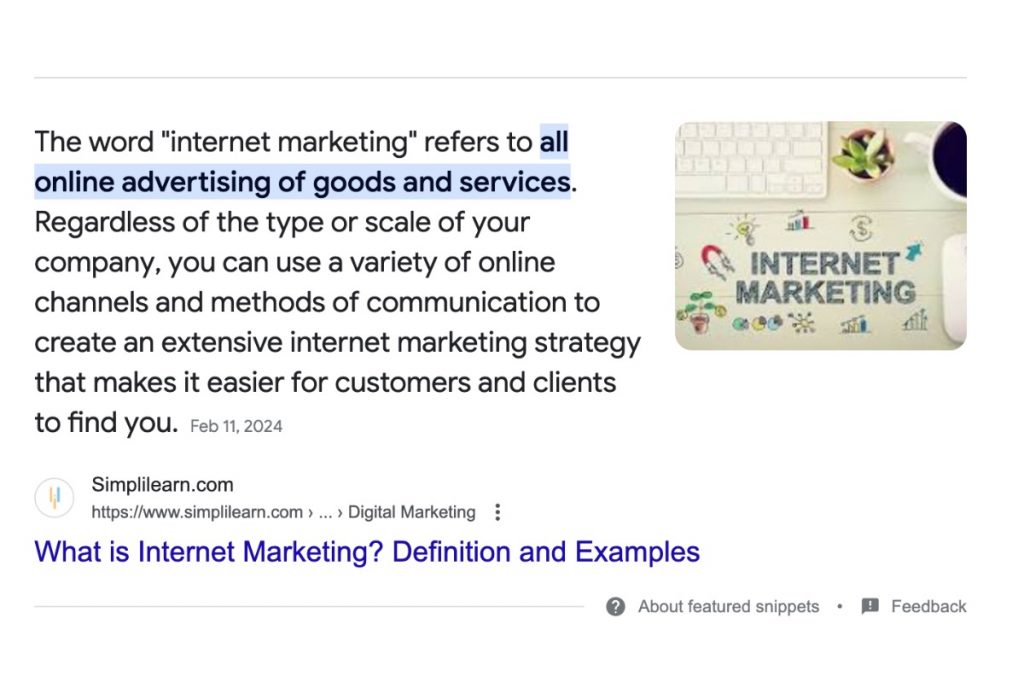| Feb 4, 2013
A test for snippet marketing and its results

A typical Google results page includes ten organic results along with sponsored ads on the top and right hand side of the page. Out of millions of webpages out there, Google selects the top ten pages for page one results for any given query. The listings include a title, URL and short description, called a snippet, which provides an introduction to the website that you are being invited to visit. Imagine standing on a street with multiple storefronts all selling similar things. If there are five candy stores adjacent to each other which one do you choose? Probably the one that looks most attractive from outside. The case is similar on a search results page. The title, URL and description all act as a storefront for your website. They need to be catchy and attractive to stand out from the other results and draw searchers’ attention to encourage them click through to your website.
A search result snippet is usually the first interaction that any searcher will have with your brand / website. A sloppy snippet discourages searchers from clicking through to the site, giving an impression (hopefully a false one) about the quality of the website. Searchers are more likely to click on a result which catches their attention, gives an engaging description of the content, and sets your site apart from all the competition on that results page.
Here is a screenshot which shows the top few results for the phrase ‘internet marketing’:
The sixth result stands out from all others because of the clean and descriptive title, URL and description text. The image in the snippet sets the listing apart even more. Adding markup data about your content gives you the ability to make these snippets richer by presenting images, product reviews, etc. in the snippet and providing a much richer initial experience. However, for the purposes of this post, we will only consider the textual part of the snippet.
Our Test: Do better snippets result in improved click-through rates for a website?
In theory, it makes sense that an individual is more likely to click on the result which seems most well put together and offers the most information. But is there any real data to back up this claim? We decided to conduct a test and see whether making changes to these snippets would make any difference to the click-through rates for a webpage. We selected four pages on a website and optimized them for four different keywords. The major changes that we made to each of these four pages included rewriting titles, URLs and descriptions.
Keyphrase #1 Results:
The page that we optimized for this phrase was ranked in the #1 spot on Google even before making the changes to the snippet for this page. We used this as a control for our test, as without any ranking changes, this would really give us an idea of what was affecting traffic if at all. We made changes to the snippet in November 2012 and visits for this phrase increased in January. The following chart shows the number of visits coming to the site on this phrase:
 One could argue that the January 2013 visit increase could be the result of a seasonal effect. But notice the same time frame for last year. A seasonal high would more or less follow the same pattern year over year. Which is not the case here. Webmaster tools data shows a 150% improvement in the click through rate for this phrase between November and January.
One could argue that the January 2013 visit increase could be the result of a seasonal effect. But notice the same time frame for last year. A seasonal high would more or less follow the same pattern year over year. Which is not the case here. Webmaster tools data shows a 150% improvement in the click through rate for this phrase between November and January.
Keyphrase #2 Results:
The page that we optimized for the second keyphrase was ranked at the bottom of Google page 1 when we initially made the change in October. A few days after making the changes, we saw an increase in rankings for the phrase.
 There was a 30% improvement in the click through rate to the website from this phrase and a 7% increase in the visits.
There was a 30% improvement in the click through rate to the website from this phrase and a 7% increase in the visits.
Keyphrase #3 Results:
The impressions for this phrase went up by 400% and the clicks by 600% with a resulting improvement in click through rate of 40%. The changes also resulted in ranking improvements from page 3 to page 1.
Keyphrase #4 Results:
For keyphrase #4 we saw major click improvements of 1700% on the page that was optimized for this phrase.
By improving the snippets on search engine results, we were able to prove our hypothesis that good quality snippets will lead to higher click through rates. But it’s important to remember that part of the reason our test resulted in such phenomenal success was because there was very good quality content on the website to support the keywords. So make sure that you give searchers a positive experience starting on the search engine results page and continuing on their journey throughout the website.
Learn more about our higher education marketing, manufacturing marketing and seo services.

